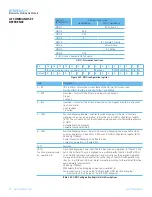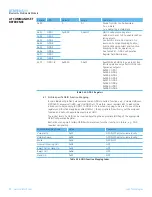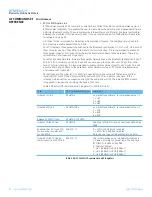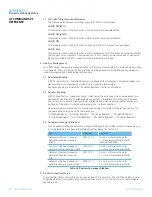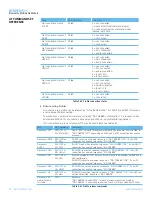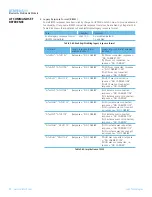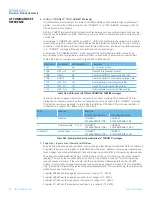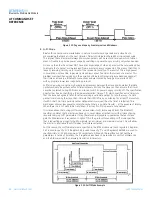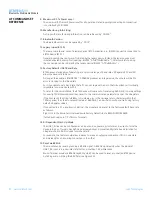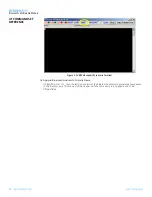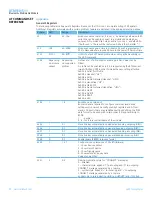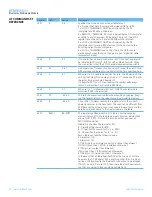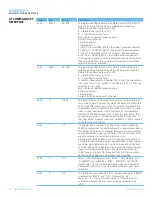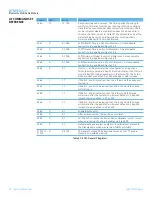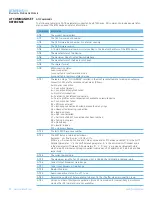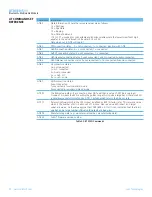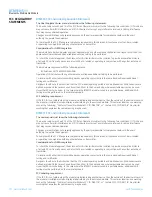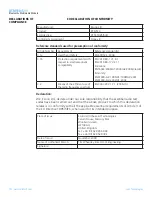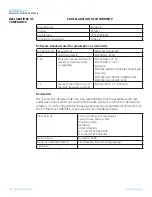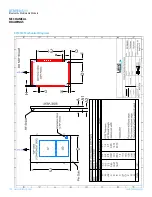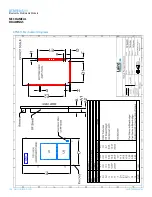
93
www.lairdtech.com
Laird Technologies
BTM510/511
Bluetooth
®
Multimedia Module
Register
Deflt.
Range
Description
S531
0
0..4
Specifies the mode on connection establishment.
0 = Normal, that data is exchanged between UART and RF.
1 = LOCAL_COMMAND. UART input is parsed by the AT
interpreter and RF data is discarded.
2 = REMOTE_COMMAND. RF input is parsed by the AT interpreter
and UART data is discarded. If S Register 536 is not 1 then this
register cannot be set to 2 and an ERROR will be returned.
3 = LOCAL_COMMAND. UART input is parsed by the AT
interpreter and incoming RF data is sent to the host using the
RX<string> asynchronous response.
4 = LOCAL_COMMAND and on the rf side, the GPIO is auto
-
matically sent when there is a change in input. (digital I/O cable
replacement mode).
S532
0
0..7
If non zero then on every connection, a SCO channel (audio) will
be initiated. Bit 0 for HV1, Bit1 for HV2 and Bit2 for HV3. When
the connection is lost, the SCO channel disappears along with it.
S535
20
0..41
Link Supervision Timeout. If units go out of range, then a NO CAR-
RIER message will be sent to the host after the time specified here.
S536
0
0..1
When set to 1, a remote device can ‘capture’ the AT parser of this
unit by it sending this module an escape “!!!” sequence. The inter
character timing is set via S Register 12.
If S Register 507 is >= 2, then reading this register will always
return 0 and writing 1 will result in ERROR 33.
S539
0
0..1
When set to 1, in idle mode (S512=1), UART Rx characters are
discarded if DSR is de-asserted.
S541
20
-43..20
This sets the power level in dBm when inquiring or paging. Read-
ing this register returns the value stored in non-volatile memory.
S542
4
-43..20
As per S541, however reading this register returns the current
power level as set in the base band. The read can be different from
S541because the actual power is set using a lookup table and the
base band rounds down to the nearest value in the table.
S551
$3211
$0..$ffff
This register specifies in each 4 bit nibble, how the outgoing
modem status bits to the remote peer gets its value. Bluetooth®
allows for RTR, RTC, DV and IC bits to be exchanged over an
RFCOMM connection.
Nibble 0..3 specifies the source for RTC
4..7 specifies the source for RTR
8..11 specifies the source for DV (i.e., DCD)
12..15 specifies the source for IC (i.e., RI)
Each nibble can take the following value:
0 Always set to 0
1 Always set to 1
2 If DCD (pin 8 on module connector) is output then always 1
If DCD is input then 1 if DCD is asserted otherwise 0
3 If RI (pin 6) is output then always 0
If RI is input then 1 if RI is asserted otherwise 0
4 If DSR (pin 10) is asserted then 1 otherwise 0
In the event that a nibble specifies DSR as the source of its state,
be aware that if, S Register 507 is anything other than 0, a de-as-
sertion of DSR will cause the Bluetooth connection to be dropped.
If bits 0..3 and 4..7 are set to 0, then some Bluetooth devices will
use that as a signal to stop sending any data back.
AT COMMAND SET
REFERENCE

